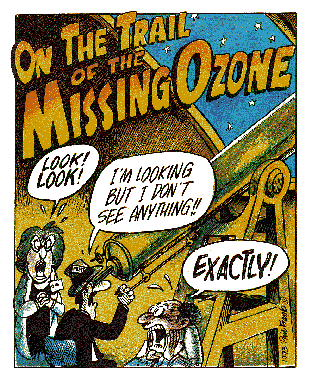 > English > Climate Encyclopaedia > Upper Atmosphere > basics > 2. Ozone hole
> English > Climate Encyclopaedia > Upper Atmosphere > basics > 2. Ozone hole
|
Upper AtmosphereBasics |
Unit 2
|
|
One of the most important scientific findings at the end of the last century was the discovery of the ozone hole over Antarctica. In this unit we will look at how this ozone hole formed and what measures have been taken so far to close it (and we will try and do this without using too much chemistry!). The discovery of the holeSince the 1970's, measurements of stratospheric ozone have been made in Antarctica. These measurements show that the ozone concentration has fallen over time. There are many stories surrounding the discovery of the ozone hole.
|
The first measurements of really low ozone levels were made over Antarctica in 1985. The levels were so low that the scientists who made them thought they weren't true, and that their instruments were faulty. It wasn't until later, when new instruments were used, that these low values were found to be true. At the same time, ozone levels were being made from space aboard a satellite using an instrument called TOMS (Total Ozone Mapping Spectrometer). This instrument also didn't pick up the low ozone values because values recorded below an certain value were assumed to be errors. It was only later, when the raw data was reprocessed, that the results confirmed what nobody wanted to believe. Very intensive research then began and former warnings about the potential harmful impact of chlorofluorocarbons (CFC's) on ozone levels were rediscovered. As a result, CFC's were banned as part of the Montreal Protocol. Discovery of the ozone hole showed that we humans are capable of altering climate globally. It also proved that rapid world-wide action can be taken to slow down climate change.
|
|
About this page:author: Dr. Elmar Uherek - Max Planck Institute for Chemistry, Mainz, Germany
|

